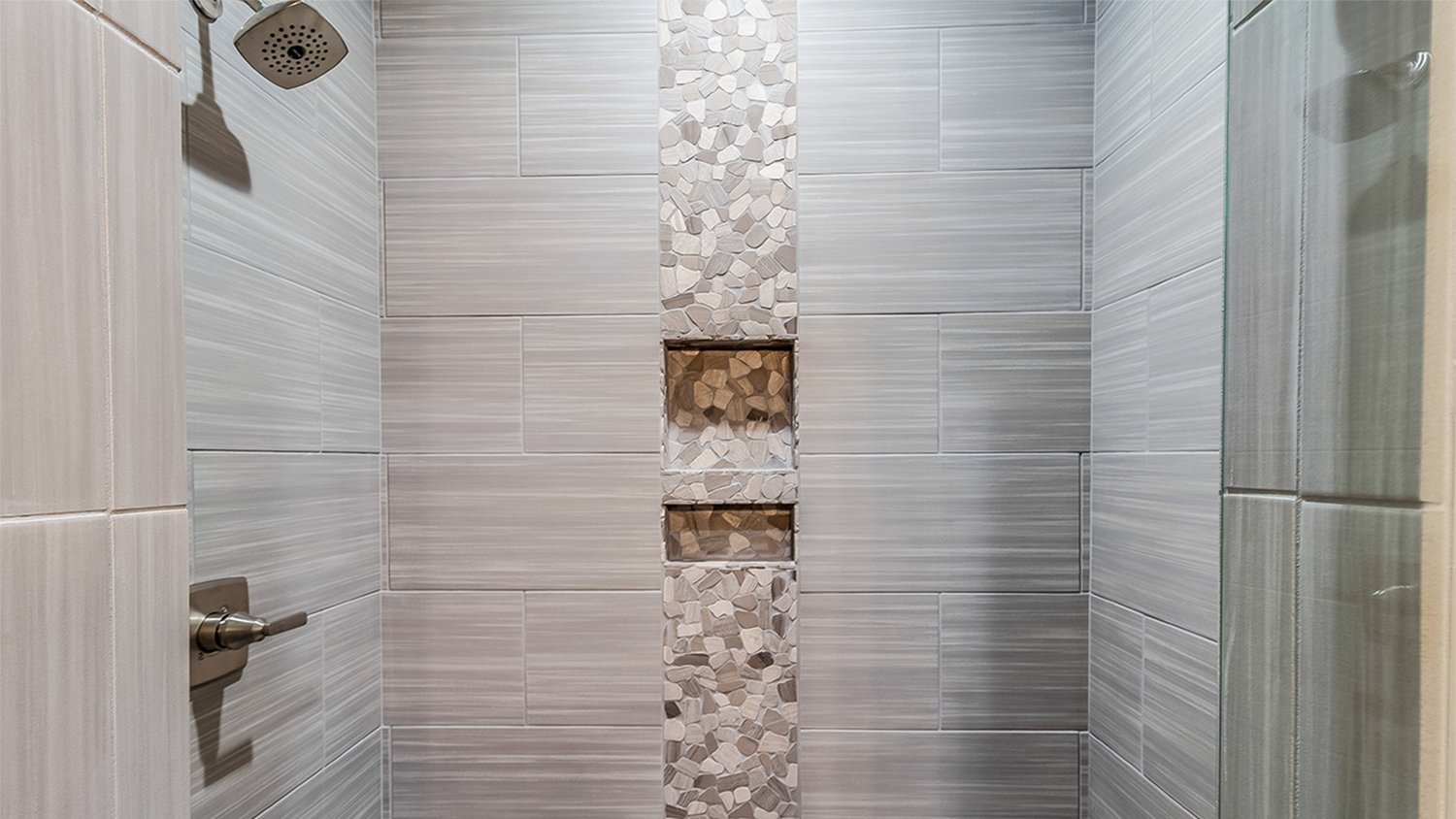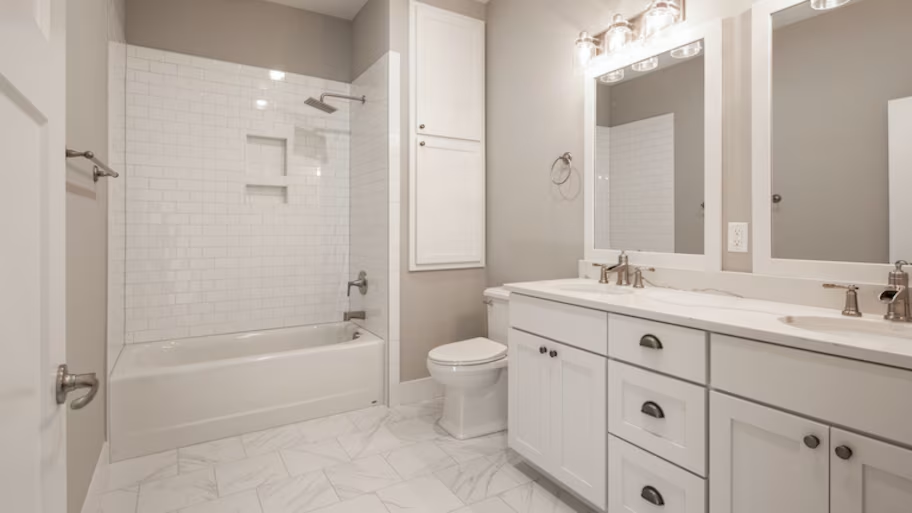
Building a laundry room addition to your home adds value and functionality. Your laundry room addition cost will depend on size, materials, and other factors.
A steam shower could be a hot addition to your bathroom that adds value


Steam shower installation costs between $4,000 and $14,000.
A steam shower can provide an ROI of up to 30%.
There are kits you can purchase that come with a generator and some of the materials.
Hiring a contractor for the installation is recommended over DIYing.
Yes, you could pack up and head to the gym to take a steam shower—but then you might feel pressured to work out when you just need to relax. But what if you brought the steam room to your home? Learn what a steam shower is, what the installation process is like, and most importantly, whether it’s a worthwhile investment.
A steam shower is a moisture-sealed shower stall without a bathtub that traps steam without running hot water. This is accomplished by running a steam generator, which can be purchased alone or along with a steam shower kit.
The steam generator is stashed in a closet, in the attic, or in cases where the home has been built with the shower, under the house. If you’re converting a tub to a walk-in shower, it’s worth considering including a steam shower.
Steam rooms are often found at spas, and a steam shower is a way to bring the benefits of a steam room into your very own home. A steam shower works by creating an airtight space that fills with steam. As the steam generator heats up water vapor, it creates the steam and releases it into the shower, enveloping you and offering many health benefits.

Human beings have been enjoying the benefits of steam rooms since as early as the Neolithic period 12,000 years ago. Of course, they have been updated a tad since then.
Adding a steam shower is a great bathroom remodel idea because it offers a number of benefits in the comfort of your own home.
Although they’re called “showers,” a steam shower is not used to lather, rinse, and repeat. But sitting in a steam-filled enclosure comes with a whole host of benefits.
Often used by aestheticians during facials, steam can help with skin purifying. Because you tend to sweat in a steam shower, dirt, dead skin cells, and bacteria get pushed out of your skin, helping your pores clear out.
Aside from possible aesthetic perks, there are some wellness benefits to using a steam shower. According to MedlinePlus, steam is helpful for relieving a stuffy or runny nose and opening up sinuses. Steam bathing can also provide relief from muscle pain after exercising, improve circulation, and loosen stiff joints.
Steam showers are designed to be relaxing, and if yours is equipped, adding essential oils can be a nice boost to a regular steam. Be sure to check if your system has an aromatherapy component before adding essential oils to your water since they can damage the system if it’s not designed to handle them.
As opposed to a traditional shower where the water has to run to produce its relaxing warmth, a steam shower simply releases steam, which ultimately reduces water usage. Before using the steam shower, you can take a quick shower to wash up. Then, you can turn on the steam shower and bask in its warmth while it opens your pores, lowers your stress, and aids in blood flow.
A steam shower uses about 2 gallons of water as opposed to a conventional shower that can use 20 gallons or more. After you’ve relaxed and had the steam do its thing, you can turn on the water and do a quick rinse.
Steam showers are expensive to install and can increase walk-in shower costs—aside from the shower itself, you have to make sure you have good ventilation in the bathroom. If you don’t have the design just right, steam showers can cause mildew and other moisture problems like mold that are difficult and costly to get rid of.
Also, if you’re not going to use it often enough, you’re better off putting your money elsewhere and visiting a spa to get your steam fix.
When considering a steam shower, you’ll want to understand the differences between a traditional shower and a steam shower and how they differ from saunas. Steam showers are vapor-tight and enclosed, while traditional ones are not. You can convert a traditional shower into a steam shower, which requires a steam generator.
Both steam showers and saunas offer similar benefits, but they function differently. Instead of steam, saunas are all about dry heat, which comes from a stove or heated rocks. Saunas reach high temperatures between 160 and 200 degrees Fahrenheit with low humidity levels, while steam showers reach lower temperatures at 105 to 115 degrees with close to 100% humidity.
| Traditional Shower | Steam Shower | Sauna |
|---|---|---|
| Moderate humidity | Nearly 100% humidity | Low humidity |
| Simplest installation | Hardest install | Moderate installation |
| 98–104°F | 105–115 °F | 160–200 °F |
| Lowest maintenance | Highest maintenance | Moderate maintenance |
| Not vapor-tight | Vapor-tight | Not vapor-tight |
| Most water usage | Less water usage | Least water usage |
| Primarily for bathing | For bathing and possible health benefits | For possible health benefits only |
Steam showers can be an excellent bathroom upgrade, but there are a few things you should consider before installation.
Steam showers require a few extra upgrades to your bathroom. You’ll need space to install a steam generator. On top of that, you may also need to upgrade your ventilation system or install an exhaust fan to combat the extra humidity. The design takes serious consideration, and it’s not typically something you can DIY.
Mold is a serious risk because of the high humidity. For this reason, you should hire a licensed plumber even if you’re comfortable with basic plumbing DIYs.
Steam showers come with added costs. The conversion costs around $4,300, and though steam showers use less water than traditional showers, longer showering sessions can negate these benefits and increase your water bill. You’ll also have to pay for occasional repairs.
Steam showers require more maintenance than standard showers because the high humidity makes them even more vulnerable to bacteria, mold, and mildew growth. You’ll need to clean them more often and descale and flush the steam generator so it works properly. With more components comes more repairs, and the repairs typically required of a steam shower are more complicated than a simple DIY.
Steam showers come with many potential benefits, but they’re not right for every lifestyle. While some people enjoy a nightly steam session, others find their shower is an expensive occasional luxury.
Before installing a steam shower, consider how much you’ll use it. You may also want to consider consulting a doctor. Steam showers can benefit certain health conditions, but may come with warnings for others.
The average cost to install a steam shower, including the kit and labor, is about $4,300. If you’re looking to have a custom steam shower installed, that runs between $4,000 and $14,000 and can be a significant portion of your bathroom remodel cost. The price will vary depending on the type of materials your contractor uses, the thickness of the glass, and the steam generator you choose.
Steam generators that hold a higher volume of water require more power and cost more. Most steam showers provide an ROI of up to 30% when or if you decide to sell your home.
If you decide to buy a steam shower kit, which comes with a generator, fittings, and heads, you’ll still need to hire a plumber and an electrician. Electrical work is dangerous, and a plumbing mistake can be very costly. Getting a professional involved in the installation or tub-to-shower conversion can ensure that it’s done properly.
Your best bet for installation is a local shower installer who specializes in bathrooms or tiles and is licensed, bonded, and insured.
From average costs to expert advice, get all the answers you need to get your job done.

Building a laundry room addition to your home adds value and functionality. Your laundry room addition cost will depend on size, materials, and other factors.

Curious how much a shower remodel costs? From new fixtures to full installations, we have the prices you need to know to establish a shower remodel budget.

If your bathroom needs sprucing up, a new vanity will make a big difference. Vanity installation costs depend on the size and type of the countertops and fixtures you choose.

There are eight common shower pan sizes, which vary based on the shape of the shower. If you want a shower in a unique size, you can custom order a shower pan.

An updated bathtub can give a bathroom a whole new look. Find out how much it costs to replace a bathtub in Dallas, TX, including prices by type and labor costs.

An updated bathtub can give a bathroom a whole new look. Find out how much it costs to replace a bathtub in Atlanta, GA, including prices by type and labor costs.